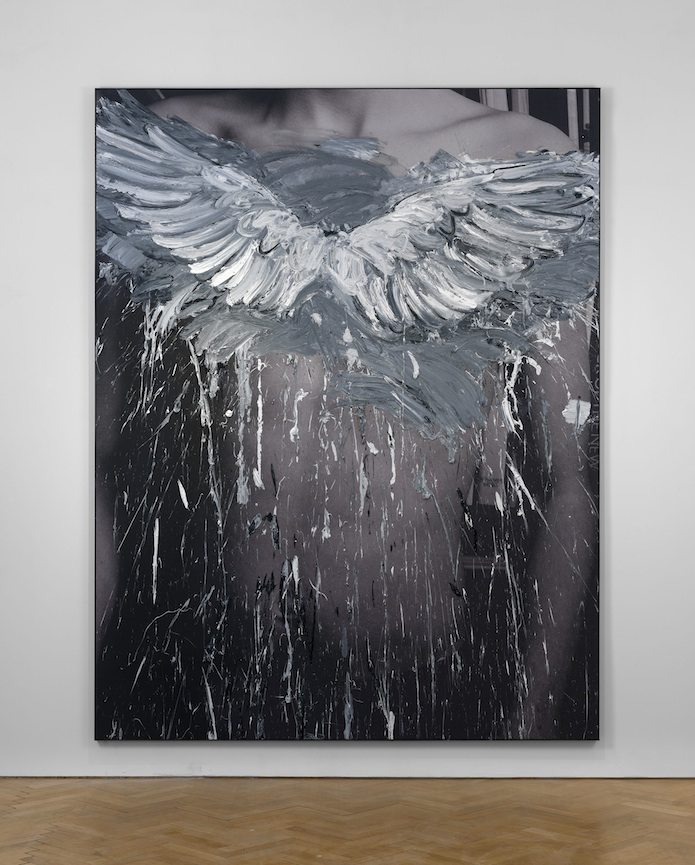New works by Marcus Harvey at Vigo Gallery
For this, Marcus Harvey's first solo show at Vigo Gallery, the artist is embroiled in a battle between the romance of painting and the surety of photography, accentuating and deconstructing their relationship.
Harvey's highly worked figurative paintings and sculptures seek out iconic forms of Britishness that have an antagonistic relationship to the contemporary British psyche, be they portraits of politicians, criminals, war heroes or landscapes.
Moving through the unsavoury themes of patriotism, British history and machismo without genuflecting to the liberal art establishment through deconstruction and irony, his ambivalence puts the viewer in the position, often uncomfortably, of a coerced or suggested empathy through the seductive nature and performative application of his materials.
This has been the one truly consistent conceptual strand in Harvey's work where the urgent physicality, the brutishness of his paint, working as emotional expression has born the clichéd notion of painting as a factual truth working against the counterpoint of photography as cold, world, fact.

The contextualising photographic backdrops in this instance range from the urban, South East London estates and bleak seascapes of the Kentish coast to his son's body or and his own upper arm, articulating these surfaces as canvases upon which violent swathes of paint reconfigure tattooed iconography in a meta existence. These images dance tantalisingly in sympathy and at odds, both spatially and conceptually, offering a pugnacious and lamenting take on the deeply unfashionable subjects of "hearth", "home" and "country".
"Dad" is a bundle of daubs and marks forming the funerary arrangement of the letters DAD often seen in the picture window of a hearse and at the graveside for what might notionally be called a "working class" send-off, for the paternal figure. The letters hover as paint, graffiti and blooms against a concrete garage wall. Again, the paint darkly implores empathy for the unravelling and beleaguered father figure in contemporary life.
The painting, "Isle", uses the white cliffs of Dover as a metaphor for Britain's place in a changing, uncertain world. The paint sits proud of an underlying photographic sea. Britain's cliffs look strong, poignant and full of history, proud in adversity. Bad weather seems imminent, a storm is brewing and the water on which the painting sits is changing. Shifts of global power and economic woes threaten this mighty fortress. It is not clear where the future lies but still the island stands strong. The tide may or may not turn.
Other images rage against moody backdrops, articulated with brutishness and a factual directness that is neither full of patriotic jingoism nor ironic satire. When we see this images we are there somewhere in between the paint and the photograph.